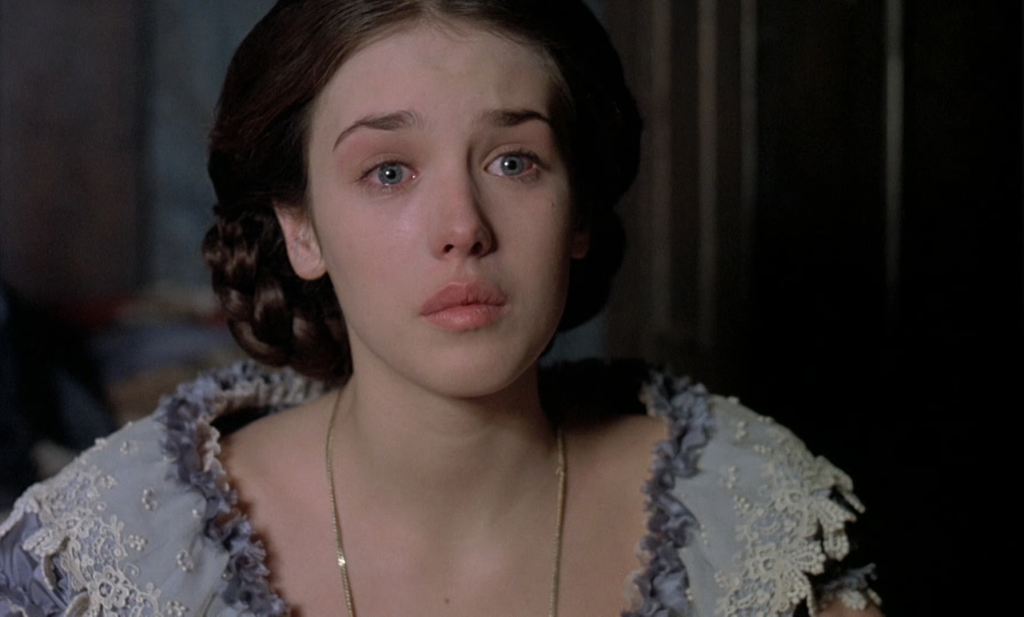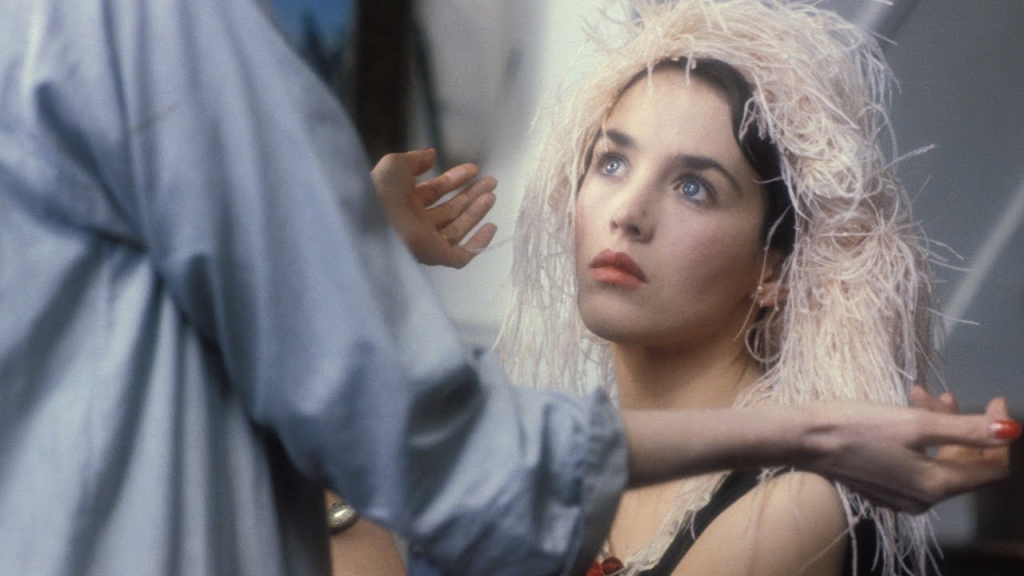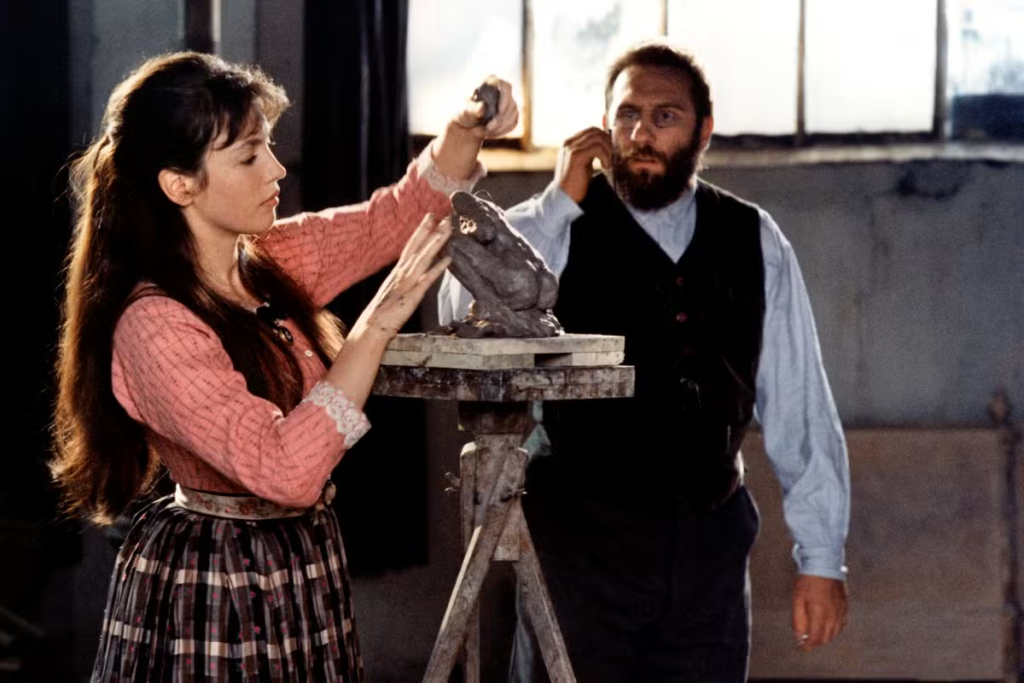Isabelle Yasmine Adjani was born in Paris on June 27, 1955. The daughter of an Algerian father and a German mother, Isabelle would begin her film career in 1970 at the age of fourteen in Le Petit Bougnat. To the present day, Adjani has featured in almost fifty films and has been nominated for two Academy Awards and has won Best Actress at Cannes twice in 1981 for her roles in Possession and Quartet. With five Best Actress awards at the Césars (Possession, L’Été meurtrier, Camille Claudel, La Rien Margot, and La Journée de la jupe) Isabelle Adjani is an acting legend – a fact that has been attested to by her receiving the position of Commandeur in Ordre des Arts et des Lettres in 2014 and the position of Chevalier in Ordre national de la Légion d’honneur in 2010.
Nadine Whitney takes a look at some of Isabelle Adjani’s most feted roles.

L’Histoire d’Adèle H. (The Story of Adèle H.) François Truffaut, 1975.
At the age of nineteen, Adjani would star in the film which garnered her first Academy Award nomination. Based on the peripatetic life of Victor Hugo’s daughter, Adèle (Adjani) as she runs from her family home in exile in Guernsey in 1863 to find a young officer and the object of her obsessive affection, Lieutenant Albert Pinson (Bruce Robinson) in Halifax, Nova Scotia. Taking the pseudonym Adèle Lewly, Hugo finds a place at a comfortable boarding house run by the kindly Mrs. Saunders (Sylvia Marriott) and seeks out an uninterested Pinson through the streets and ballrooms of Halifax and eventually follows him to Senegal.
Adèle’s fantasies of her marriage to Pinson cloud her mind – a woman with extreme erotomania who gradually falls into depression, and madness. Truffaut’s account is based on the real Adèle Hugo’s diaries, which she kept assiduously. Truffaut saw Isabelle in a film in 1974 and decided that she was perfect for the complicated mix of absolute fragility and mania that Adèle embodied. In some ways L’Histoire d’Adèle H. marked out the trajectory of Adjani’s most acclaimed roles; people loved to look at her beautiful, suffering face tinged with madness. It is as if Adjani’s physical perfection required some mental imperfection to make the actress seem plausible as a human being. Nevertheless, L’Histoire d’Adèle H. is an extremely accomplished work for a young actor and she commanded the screen with her emotionality.
As a side note: Bruce Robinson who played the feckless Pinson would later turn his hand to directing. His most famous work was the semi-autobiographical Withnail and I in 1987.

Nosferatu: Phantom der Nacht (Nosferatu the Vampyre) Werner Herzog, 1975
Fair warning: there are two cuts of Herzog’s remake of the famous Murnau film, one in German as it was intended, and one filmed in English. The English film is truncated and although Adjani is fluent in English, it was clear that other actors were having trouble with the language. Isabelle Adjani grew up fluent in French and German (her mother’s language), so her Lucy Harker is better suited to the German cut.
Werner Herzog deciding to remake the most German of German films was no small undertaking and he certainly did not see it that way. Essential to the film’s success was a surfeit of rats and precisely the correct cast for the three leads: Bruno Ganz as Harker, Isabelle Adjani as Lucy Harker, and Klaus Kinski as Count Dracula. A version of Bram Stoker’s Dracula filtered through the lens of the great F. W. Murnau (his silent German Expressionist 1922 version only just escaped being completely destroyed by the estate of Stoker who burned as many copies as they could after a court win) Nosferatu: Phantom der Nacht needed to be at once profoundly beautiful and as seductive as it was horrific. It is Isabelle Adjani’s ethereal Lucy that provides part of the immense beauty of the film, especially when she is paired with the beastly Klaus Kinski. After all, if an ancient vampire were to uproot himself from Transylvania for love – Isabelle Adjani is a worthy reason.
Most people have seen a version of Dracula so retelling the story is unnecessary, but it is pertinent to describe some of the additions Herzog made to the tale including the incredible plague carnival played out in the town square through which Lucy is wandering dazed and lost trying to convince the townspeople they must leave. Already infected, they enact a last supper and mad orgiastic dances. Herzog forgoes any type of happy ending for Lucy despite her braveness in distracting Dracula until daylight. Her husband is already infected with a different kind of sickness and the vampire lives on.

Possession Andrzej Żuławski, 1981
There is no simple way to describe Andrzej Żuławski’s Berlin set marriage breakup/creature feature/Cold War thriller. In fact, when Żuławski himself pitched it he came up with, “Woman f*cks with octopus.” Żuławski’s only English feature made after his work was shut down in his native Poland by the Communist government, Possession is an unwieldy and extremely strange piece of art which becomes even less easy to categorize the more times one views it. Elusive, extreme, and hallucinatory; Possession took Adajni’s skills to the furthest degree.
Adjani plays Anna, a young mother married to her Australasian spy husband, Mark (Sam Neill) living in a divided Berlin. Mark arrives back in West Berlin after a year on an operation and Anna firmly asks him for a divorce. Despite quitting his job in intelligence to be around Anna and Bob (Michael Hogben) more consistently, Anna refuses to engage in any kind of reconciliation, nor an explanation that Mark finds satisfying. After having his own mental breakdown dealing with the split, Mark begins to have Anna followed so he can understand what she’s doing beyond the passing infidelity with a pompous man called Heinrich (Heinz Bennent).
For those who haven’t seen the film, a full summary will be too spoiler filled. For those who have, there are four words: “Adjani in the U-Bahn.” Żuławski and cinematographer Bruno Nuytten (make note, he will pop up again) capture Adjani in the act of pure and almost dangerous hysterical physical performance. Anna throws herself at the walls of the U-Bahn, smashes her shopping, jerks forwards and backwards, laughs and cries, grunts and screams, expels liquids – if this scene were the only one where Adjani goes beyond what is expected from an actor it would be extraordinary as it is, but there is so much more going on and to be discovered in Possession, including Adjani playing a doppelgänger of Anna named Helen.
Possession is more than a horror film, and more than a cult film – it is art under extreme pressure. Sam Neill’s performance is excellent, but no one will ever doubt that the film belongs to Adjani.

Quartet, James Ivory, 1981
When James Ivory read Jean Rhys’ semi-autobiographical debut novel Quartet (1928) and asked his regular screenwriter Ruth Prawer Jhabvala to write a script for it, she originally demurred by telling him, “It’s so low-spirited.” Jhabvala wasn’t wrong but write it she did, and Adjani was cast as the tragic lead Marya “Mado” Zelli. Mado is married to a casual Polish art thief named Stephan (Anthony Higgins) and they live in Montparnasse in Paris. They don’t have a lot of money and are tolerated by the hoteliers who house them so long as the bill is paid. Stephan is arrested and sentenced to a year in prison. With no money and no family to speak of as she is an emigre from the West Indies, Mado finds her life and fate distinctly in other people’s hands.
Having caught the eye of wealthy British ex-patriot H. J. Heidler (Alan Bates) Mado is brought into his world by his deeply unhappy wife, Lois (Maggie Smith) who puts up with H. J.’s constant short-lived infatuations with “bruised flower” types such as Mado. She is installed in the Heidler’s spare room in their beautiful Paris home and introduced to the cream of bohemian society in the city. The cost, of course, is that she submits to H. J.’s seduction and later, Lois’ jealous cruelty.
Quartet is based on Rhys’ own affair with the writer Ford Madox Ford and his common law relationship with the painter Stella Bowen (here played by Maggie Smith as a society hobbyist) is indeed low-spirited with happiness belonging to no one, including H. J., but it is an exquisitely made film with a powerful performance by Adjani as the woman who believes herself at least partially loved by two men, only to find out she is disposable to both. There are wonderful scenes where Ivory recreates Paris in the 1920s including the Café Dôme. For her role as Mado, she was awarded Best Actress at Cannes in 1981 – an award she shared with her performance in Possession.

Camille Claudel, Bruno Nuytten, 1988
Adjani once again playing a talented artist who ends up spending a good deal of her life in an asylum – surely lightning can’t strike twice? Adjani believed it could and produced this biopic of the tragic and sublimely talented sculptor Camille Claudel. It was Adjani who brought Bruno Nuytten on as director (they had worked with each other several times, were ex-partners, and share a son) and whose ability to emote at the level of a headstrong and passionate artist keeps the audience transfixed for its 175-minute runtime.
Camille Claudel (1864-1943) was the eldest daughter of a permissive, loving, but often absent father Louis-Prosper Claudel (Alain Cuny). Distinctly bourgeoise, Camille sent small shockwaves through the community where she lived in Paris with her midnight clay raids and bohemian friendship with the British sculptor Jessie Lipscomb (Katrine Boorman). Camille was adored by her younger brother, Paul (Laurent Grévill) who she encouraged to be a writer. Attempting to be noticed by the establishment as a talent in her own right was near to impossible until she met Auguste Rodin (Gerard Depardieu) who was France’s “maker in marble” of famous men. Beginning as an assistant in Rodin’s studio, Camille became indispensable to Rodin and eventually they became lovers. However, Camille’s relationship with Rodin would not only end in heartbreak and scandal, but also cause her extreme paranoia that he was using her talent as his own.
Isabelle Adjani brings Claudel out of obscurity and into the light as a groundbreaking sculptor whose personal relationships eventually soured to the point where she became a shut-in living in a small room working night and day. Not only was Camille Claudel a role for which Adjani was nominated for an Academy Award, it was also the film entered into the International Academy Award competition. It was also a role which won her a César for Best Actress, and a Silver Bear at Berlin. Adjani is impossible to ignore as she screams “Rodin, Rodin!” under the cowardly artist’s window. Camille Claudel herself is the subject of another film by Bruno Dumont starring Juliette Binoche, Camille Claudel 1915.

La Journée de la jupe (Skirt Day), Jean-Paul Lilienfeld, 2008
Adjani plays public high school literature and drama teacher Sonia Bergerac whose students are mostly from an immigrant background. Tired, stressed, considered “immodest” because she insists on wearing a skirt, and generally abused and spoken over by her working-class students, life changes in an instant when she finds one of the students has brought a gun to school. Sonia manages to confiscate the gun, but instead of getting everyone out of the classroom and taking the gun to the authorities, she snaps and finds herself keeping a section of her students hostage.
Extreme racism between the students of different backgrounds and even worse sexism is a daily occurrence at the school. The place is somewhat of a powder keg and the school principal has avoided reporting any issues for fear that the school will go down in rankings. Sonia’s instincts to care for the children under her supervision as a teacher have become distorted as she is unable to begin any kind of repartee with them. With a gun in her hand, they will at least get through a lesson on Moliere.
Sonia might seem only tenuously in command of her class, but Adjani is absolutely in command of her incendiary role which becomes more complex as the film plays out. Adjani had been on a hiatus from acting for five years before she accepted the part in which her North African heritage figures in prominently. Skirt Day is one of Adjani’s most realistic, yet fraught, films.
Special mentions:
The Driver, Walter Hill, 1978.
Adjani in an American crime thriller with Ryan O’Neal and Bruce Dern and cars.
Les Sœurs Brontë (The Brontë Sisters), André Téchiné, 1979.
It can’t be said that Téchiné’s biography of the Brontë sisters and Branwell (played by Pascal Greggory who will play Adjani’s brother in a later film) is good, as such. After all, it’s bizarre to make a French film about the English authors. However, it does feature Isabelle Huppert as Anne, and has Adjani as Emily wandering the moors in trousers. That’s really enough.
Subway, Luc Besson, 1985.
Co-starring Christopher Lambert, Subway is pure Besson cinéma-du-look. Neon lights, impressive hairstyles, chic clothing – and a crime thriller plot.
La Reine Margot (Queen Margot), Patrice Chéreau, 1994.
A bloody and big spectacle film interpreting Alexandre Dumas’ novel about Marguerite de Valois and her marriage to Henry of Navarre (Daniel Auteuil) and the St Bartholomew’s Day Massacre in 1572. Queen Margot is a big, glorious, and gritty historical epic/fiction which also features Jean-Hugues Anglade as Margot’s brother King Charles IX, Virna Lisi as her mother Catherine de Médicis, Vincent Perez as Margot’s lover, and Pascal Greggory as her brother Henri of Anjou.





